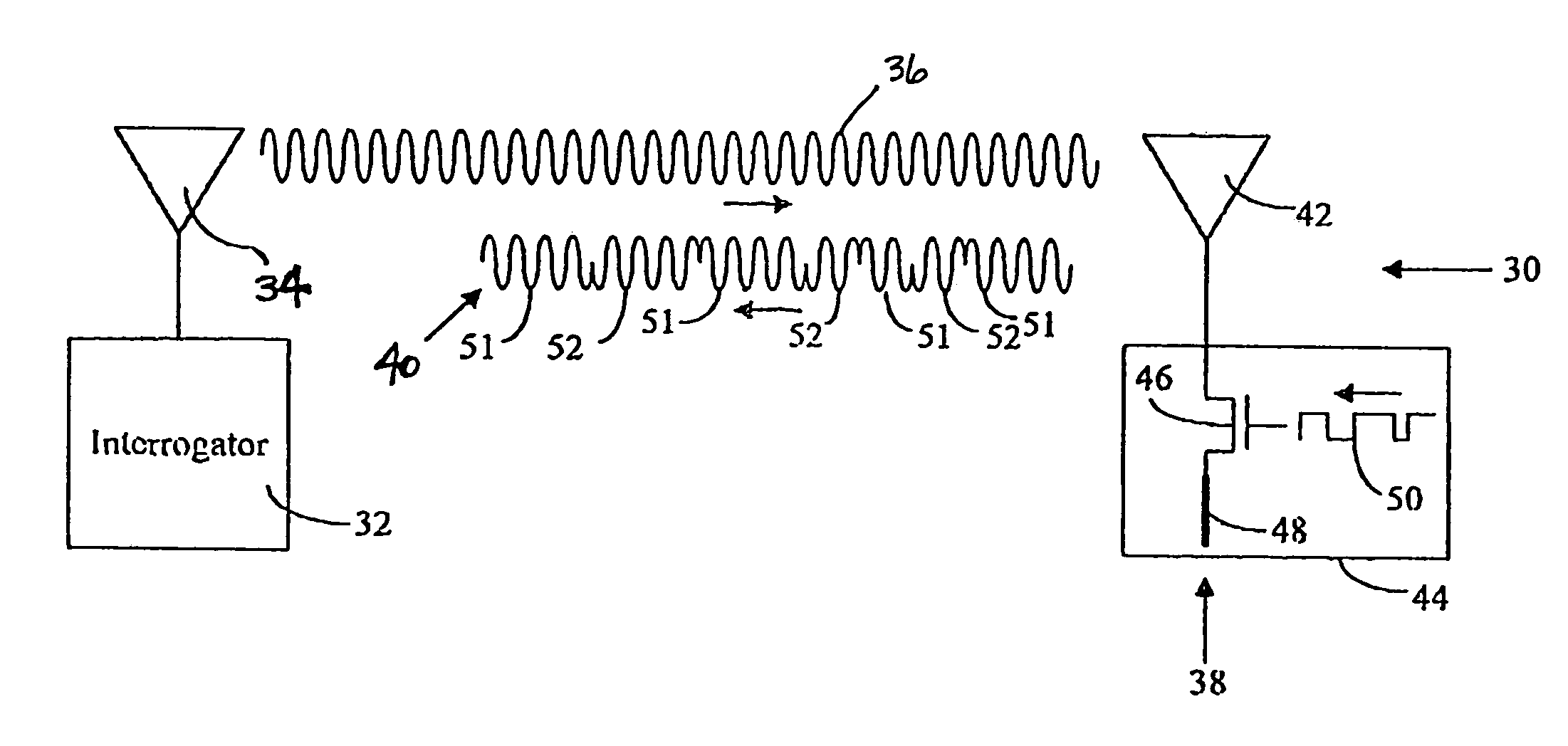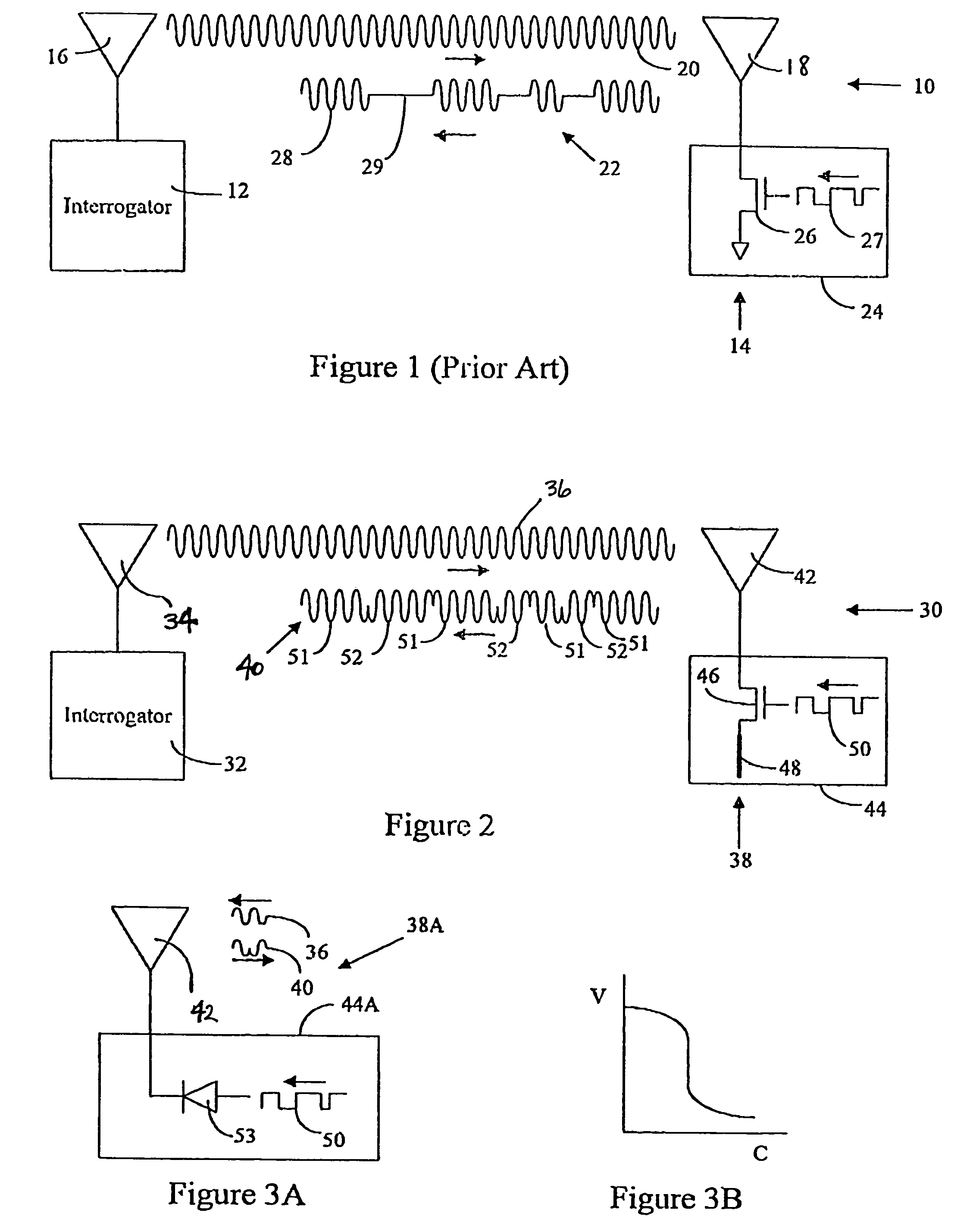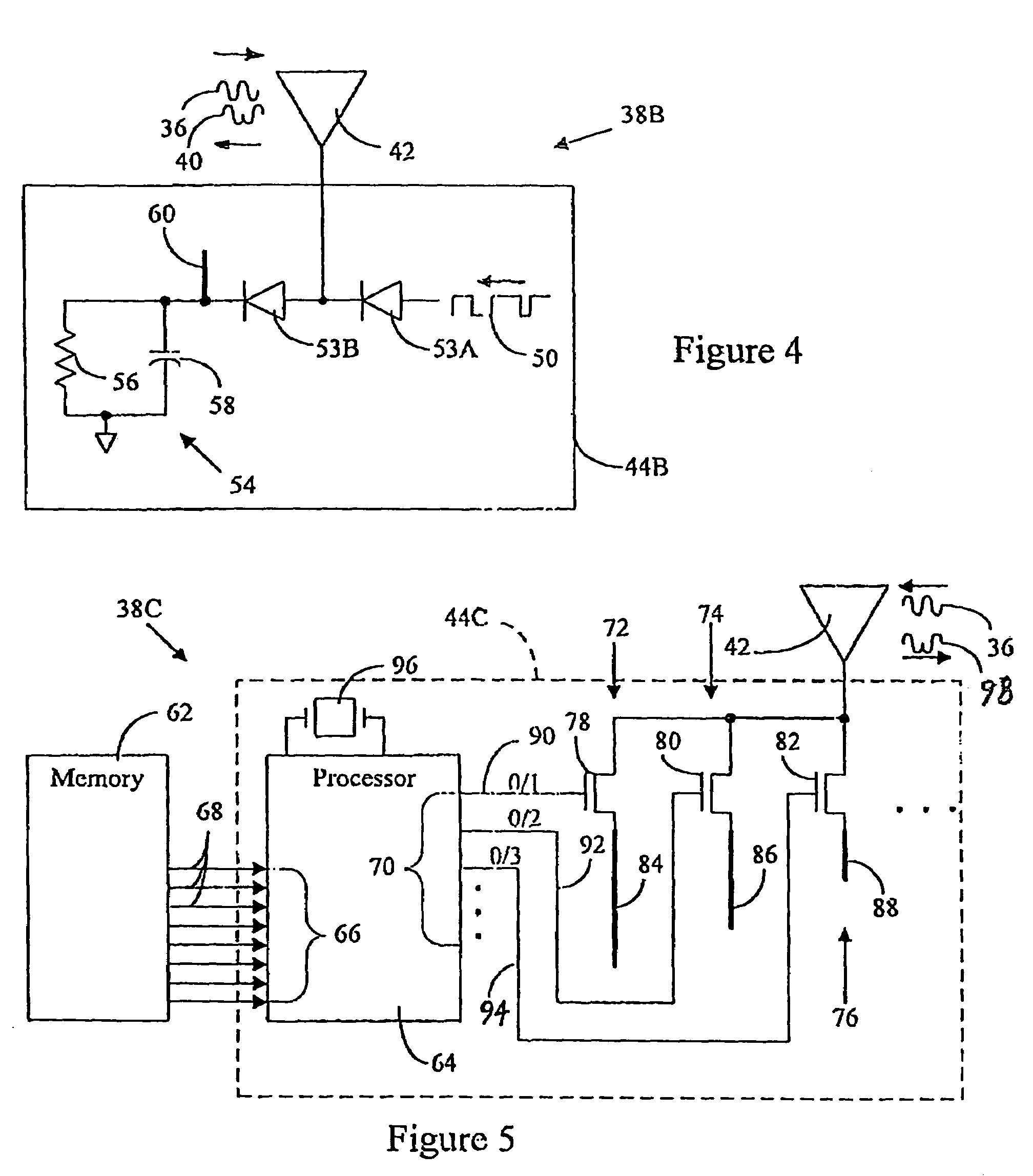Phase modulation in RF tag
a phase modulation and rf tag technology, applied in the field of radio frequency identification tags, can solve problems such as insufficient range for some applications, and achieve the effect of prolonging the communication rang
- Summary
- Abstract
- Description
- Claims
- Application Information
AI Technical Summary
Benefits of technology
Problems solved by technology
Method used
Image
Examples
Embodiment Construction
[0022]As shown in FIG. 2, an embodiment of the present invention is directed to an RF communication system 30 that employs phase-modulated backscatter signals. The RF communication system 30 includes a reader or interrogator 32 that includes an antenna 34 through which the reader transmits a continuous wave interrogation signal 36 to an RF tag 38. Based on an identification code stored in a memory (not shown) of the RF tag 38, the RF tag phase-modulates the interrogation signal 36 to produce a backscatter response signal 40 that is transmitted back to the interrogator 32.
[0023]By employing a phase-modulated backscatter response signal 40 rather than the amplitude-modulated backscatter response signal of the prior art system shown in FIG. 1, the RF communication system 30 is able to reflect much more power from the interrogation signal 36 than is possible using the prior art system of FIG. 1. That is because the RF tag 38 is always reflecting the interrogation signal 36 to produce th...
PUM
 Login to View More
Login to View More Abstract
Description
Claims
Application Information
 Login to View More
Login to View More - R&D
- Intellectual Property
- Life Sciences
- Materials
- Tech Scout
- Unparalleled Data Quality
- Higher Quality Content
- 60% Fewer Hallucinations
Browse by: Latest US Patents, China's latest patents, Technical Efficacy Thesaurus, Application Domain, Technology Topic, Popular Technical Reports.
© 2025 PatSnap. All rights reserved.Legal|Privacy policy|Modern Slavery Act Transparency Statement|Sitemap|About US| Contact US: help@patsnap.com



